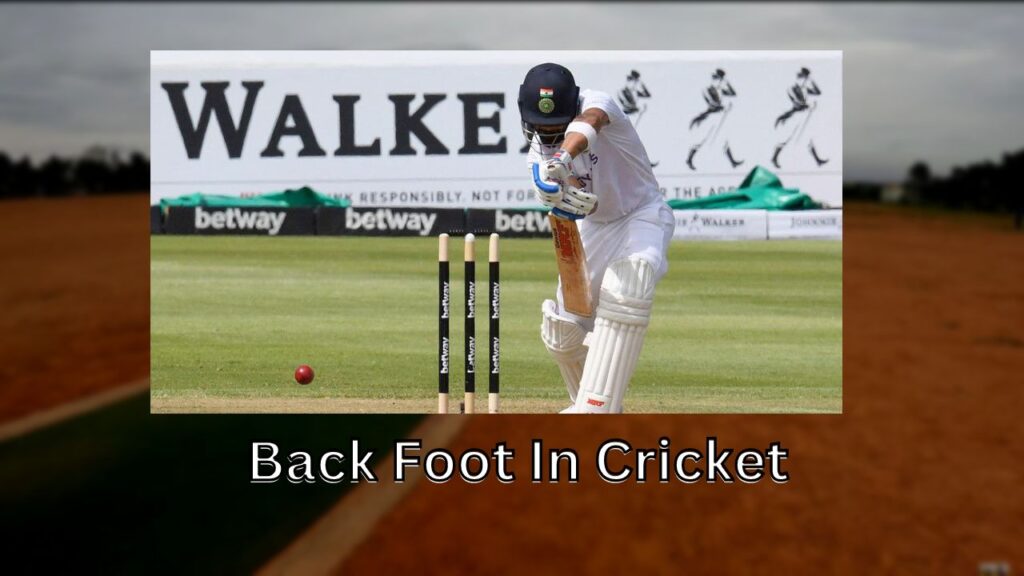Table of Contents
In cricket, the term back foot in cricket refers to one of the two primary positions from which a batsman can play a shot or defend against a delivery. The two positions are the “front foot” and the “back foot.”
Here’s what you need to know about the back foot in cricket

Stance and Position: When a batsman is on their back foot in cricket, it means that their back foot (usually the right foot for a right-handed batsman and the left foot for a left-handed batsman) is closer to or touching the crease at the batting end of the pitch. The back foot serves as the anchor point for the batsman’s position.
Defensive Shots: Batsmen often use the back foot when playing defensive shots, such as blocking or leaving deliveries. By positioning the back foot closer to the crease, the batsman can maintain a solid base and better judge the line and length of the ball.
Pull and Hook Shots: The back foot in cricket is crucial when playing aggressive shots like the pull and hook. These shots involve swinging the bat forcefully to hit a short-pitched delivery. The batsman shifts their weight onto the back foot before executing the shot, generating power and control.
Cut Shots: The cut shot is another stroke where the back foot comes into play. Batsmen use the back foot to position themselves to cut the ball that is wide and short on the off-side. It’s an attacking shot that requires precise timing and placement.
Spin Bowling: When facing spin bowlers, batsmen often go on their back foot to play deliveries that turn sharply or bounce unpredictably. This allows them to adjust to the spin and play the ball with the full face of the bat to minimize the risk of getting out.
Balance and Weight Transfer: Using the back foot in cricket effectively helps batsmen maintain balance and execute shots with proper weight transfer. The back foot acts as a pivot point, allowing the batsman to shift their weight onto the front foot for forward shots or onto the back foot for shots played on the back foot.
Footwork: Good footwork is essential for batsmen to move quickly between the front foot and the back foot in cricket, depending on the line and length of the delivery. Proper footwork enables batsmen to get into the best position to play each ball effectively.
Context: The choice between playing on the front foot or back foot depends on factors like the bowler’s delivery, pitch conditions, the batsman’s preferred shots, and the match situation. Batsmen must adapt their footwork accordingly.
In summary, the back foot in cricket is a fundamental aspect of a batsman’s technique in cricket. It is used for both defensive and attacking shots and plays a crucial role in a batsman’s ability to respond to different types of deliveries and conditions. Good back-foot play is a hallmark of a skilled and versatile batsman.
